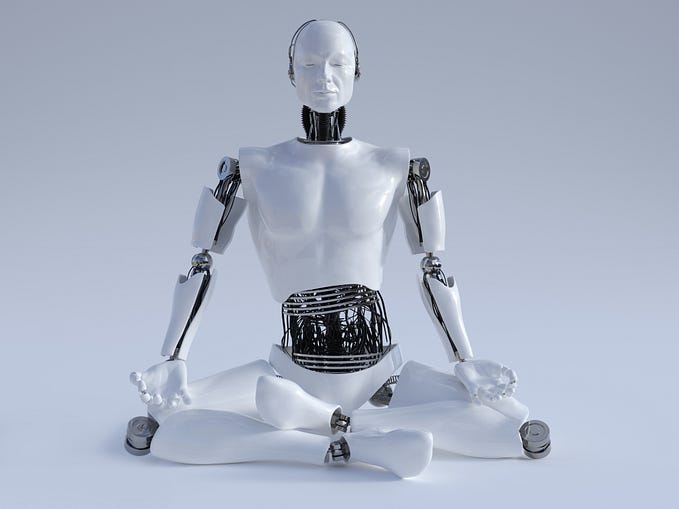Lіmite máximo de entrada para Claude AI: Top 5 Preguntas Respondidas
Want to learn more about Lіmite máximo de entrada para Claude AI: Top 5 Preguntas Respondidas? Read more about it at Anakin AI!
Introduction
In the world of artificial intelligence, Claude AI stands out as a powerful system capable of processing vast amounts of data and providing valuable insights. As with any AI system, there are certain limitations that need to be considered, especially regarding the amount of input that Claude AI can handle. In this article, we will explore the input limit for Claude AI and discuss its significance in shaping the system’s performance and capabilities.
Overview of Claude AI
Claude AI is a cutting-edge AI system that utilizes advanced algorithms and machine learning to analyze data and generate insights. Its primary purpose is to assist businesses in making data-driven decisions, optimizing processes, and improving overall performance. With its ability to process and analyze large datasets, Claude AI has found applications in various industries, including finance, healthcare, marketing, and more. Its capabilities extend from predictive analytics and pattern recognition to natural language processing and image recognition.
Understanding input limits
Input limits refer to the maximum amount of data or information that a particular AI system can handle effectively. In the context of Claude AI, input limits play a crucial role in determining how much data can be processed and analyzed accurately. These limits are often defined by factors such as computational power, memory capacity, and the complexity of the data being processed. By establishing input limits, AI systems ensure that their performance remains optimal and can provide accurate results within a reasonable timeframe.
Importance of input limits in AI systems
Input limits in AI systems hold significant importance in maintaining boundaries for AI models. By defining these limits, AI systems can avoid reaching a saturation point where the quality of analysis and output begins to diminish due to overwhelming input. This results in improved accuracy, reliability, and overall performance of the AI system. Without input limits, AI systems may encounter issues such as slower response times, reduced accuracy, and even technical failures, leading to unreliable and inconsistent outputs.
Factors that determine the input limit for Claude AI
Several factors contribute to determining the input limit for Claude AI. One critical aspect is the computational power available to the system. The more processing power the AI system has, the larger datasets it can handle efficiently. Similarly, the memory capacity of the system plays a vital role as it determines how much data can be stored and accessed during the analysis process. Additionally, the complexity of the data being processed also impacts the input limit. Complex datasets may require more computational resources and memory, limiting the amount of data that can be processed within a given timeframe.
Benefits and drawbacks of having an input limit for Claude AI
Having an input limit for Claude AI comes with both benefits and drawbacks. On the positive side, input limits ensure that the system can process and analyze data efficiently, leading to accurate and reliable results. By defining an input limit, the system can avoid encountering issues related to overload or exhaustion of computational resources. This improves the overall performance and responsiveness of the AI system. However, one drawback is that input limits may restrict the system’s capability to handle larger and more complex datasets. In some cases, this may limit the potential insights that could be derived from the data.
Ways to optimize input for better performance in Claude AI
Optimizing input for better performance in Claude AI involves considering several key strategies. First, it is essential to ensure that the input data is relevant and properly formatted to meet the system’s requirements. Irrelevant or unorganized data can hinder the system’s ability to process and analyze information accurately. Second, preprocessing and cleaning the data can help remove outliers, inconsistencies, and noise, resulting in improved analysis and more reliable outputs. Additionally, optimizing the code and algorithms used in the AI system can enhance its efficiency and reduce the computational resources needed to analyze the input data.
Future advancements in input limits for AI systems
As AI technology continues to evolve, advancements in input limits can be expected. With the continuous improvement in computational power and memory capacity, AI systems like Claude AI will be able to handle larger and more complex datasets. Additionally, the development of more efficient algorithms and techniques will further enhance the input limits, allowing AI systems to process and analyze data more effectively. As AI systems become more capable, it is anticipated that input limits will be extended, providing greater flexibility and scalability for various applications and industries.
Conclusion on the significance of input limits in Claude AI
In conclusion, understanding the input limit for Claude AI is essential for optimizing its performance and ensuring accurate and reliable results. Input limits help maintain boundaries for AI models, ensuring that the system can handle the data effectively without compromising its efficiency or accuracy. By considering factors such as computational power, memory capacity, and data complexity, input limits can be defined to enhance the overall performance of Claude AI. As AI technology progresses, improvements in input limits will continue to shape the capabilities and possibilities of AI systems like Claude AI, creating new opportunities for businesses and organizations across various industries.
Want to learn more about Lіmite máximo de entrada para Claude AI: Top 5 Preguntas Respondidas? Read more about it at Anakin AI!








